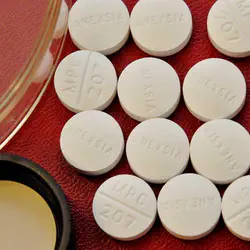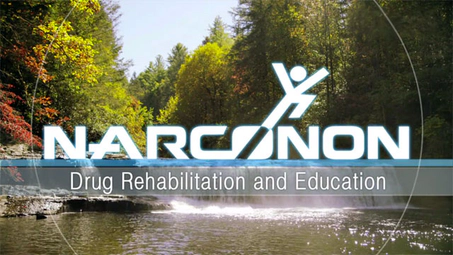DRUGS: WHAT YOU
NEED TO KNOW Booklet

Signs and Symptoms of Hydrocodone Addiction

Courtesy of DEA.gov
Painkillers started out as invaluable help for a person who had just suffered an injury or had been through surgery. While they still are helpful, opioid pain relievers have also been involved in a tsunami of addiction and loss of life that has swept across America.
Hydrocodone is the most frequently abused drug in the opioid category. It may be sold as Vicodin, Lortab, Lorcet-HD, Hycodan, Norco, Zohydro or Vicoprofen. An estimated 1.7 million people misuse this drug each year. While this might mean that some people simply borrow their mother’s prescription for their aches and pains, it also means that a significant number of these people are abusing this type of drug for its euphoric effects. It can also mean that they are addicted.1
Compare these numbers from the Substance Abuse and Mental Health Services Administration (SAMHSA):
- Abusing any type of prescription pain reliever: 3.3 million
- Abusing hydrocodone: 1.7 million
- Addicted to prescription pain relievers: 2.3 million
These numbers could mean that well over a million people are abusing and addicted to hydrocodone.
Where Are People Getting Their Pills?
According to SAMHSA, nearly half are bought, given or stolen from a friend or family member. Nearly 44% get them from a health practitioner, mostly by receiving a prescription from a single doctor, but some people forge a prescription or see multiple doctors. It’s estimated that only about 6% are buying them from a drug dealer.
The Drug Enforcement Administration reports that there are millions of counterfeit pills on the illicit market. These drugs are manufactured by drug dealers who press drugs like fentanyl or methamphetamine into the shape and colors of pills like hydrocodone, oxycodone, Xanax or Adderall. A single pill can have enough fentanyl or methamphetamine to be fatal. In 2021, the DEA seized more than nine million of these fake pills.2
Signs of Hydrocodone Addiction

When a person is addicted to hydrocodone, you will see signs like these:
- Lethargy
- Sedation
- Drowsiness
- Constipation
- Slowed breathing
- Nausea
- Vomiting
- Confusion
- Euphoria
- Itching
Like any opioid, hydrocodone depresses respiration. A person will begin to breathe more slowly, and, in fact, their breathing can slow down enough to cause their blood oxygen levels to drop. If this gets bad enough, the lack of oxygen can cause brain damage.
If too much hydrocodone is consumed, this high dosage can cause a person to stop breathing entirely. That, of course, will cause the drug user’s death.
Every year, approximately 13,000 people die from an overdose of a natural or semi-synthetic opioid drug like hydrocodone or oxycodone. This number has been relatively stable for several years. In all, nearly 80,000 people die as a result of an overdose of opioids, any type of opioid, including painkillers, heroin and fentanyl. The vast majority of these deaths result from illicitly manufactured fentanyl.3
America has reached the tragic milestone of more than 100,000 overdose deaths of all types in each 12-month period. In its entire history, America has never suffered losses like this from drugs until 2021. Eliminating an addiction to hydrocodone is one step in the right direction.
Recovering from Hydrocodone Addiction

A person who wishes to recover their sobriety after addiction to hydrocodone will need to go through a period of withdrawal. They will probably suffer symptoms like these as they withdraw from hydrocodone:
- Diarrhea
- Nausea
- Vomiting
- Dilated pupils
- Sensitivity to light
- Insomnia
- Elevated heart rate
- Elevated blood pressure
- Depression
- Mood swings
- Cravings for more drugs
Within a week, an individual will be through the worst of the withdrawal symptoms. Then they can begin to focus on their personal recovery from addiction. It takes most people time and hard work to rebuild a sober life to replace the addicted lifestyle they were living.4
Overdosing on Opioids
It is not hard to overdose on opioids. A person new to consuming opioids could get a too-large dosage on their first exposure. Since they would not have built up a tolerance to the drug, that first exposure could result in an overdose.
Or they could simply take too much hydrocodone by mistake. It is also possible that a person got their hands on counterfeit hydrocodone pills that actually contain illicitly-manufactured fentanyl, a much more powerful opioid than hydrocodone.
If a person is overdosing on hydrocodone, they will probably show these signs:
- Lips and fingernails are bluish
- They are unresponsive
- They breathe very slowly or have stopped breathing
- They may vomit
- As they struggle to breathe, they make gurgling noises or gasp
- Their heart rate is slow
Emergency medical care must be summoned immediately to save this person’s life. As opioids depress a person’s ability to breathe, they can easily die if they breathe slowly enough or stop breathing. Naloxone can be administered as an antidote to opioid overdose and most first responders have this antidote.
Finding Help
A person addicted to hydrocodone should be convinced to enter an effective rehabilitation program at the first possible moment. There are too many dangerous drugs on the illicit market, some masquerading as hydrocodone. If a hydrocodone-addicted person gets their hands on the wrong drug or takes a little too much of the drug they wanted, it could easily end their life.
Even if their life is not at immediate risk, a person addicted to hydrocodone routinely suffers a deterioration of the quality of their life. They often lose spouses, children, jobs, businesses, money, possessions and definitely, their self-respect. No matter how low a person has fallen, it is possible for them to recover their sobriety and build a new life they can respect themselves for.
Families should not give up on the effort to match a loved one up with a good rehab program. Helping the addicted find recovery is a big part of solving the drug addiction problem in America.
Sources:
-
SAMHSA. “Key Substance Use and Mental Health Indicators in the United States.” SAMHSA, 2021. SAMHSA Publication (PDF) ↩︎
-
DEA. “Counterfeit Pills.” DEA. DEA Publication (PDF) ↩︎
-
Centers for Disease Control and Prevention. “Provisional Drug Overdose Death Counts.” CDC, 2022. CDC Article ↩︎
-
National Institutes of Health. “Opioid Withdrawal.” NIH, 2021. NIH Article ↩︎


